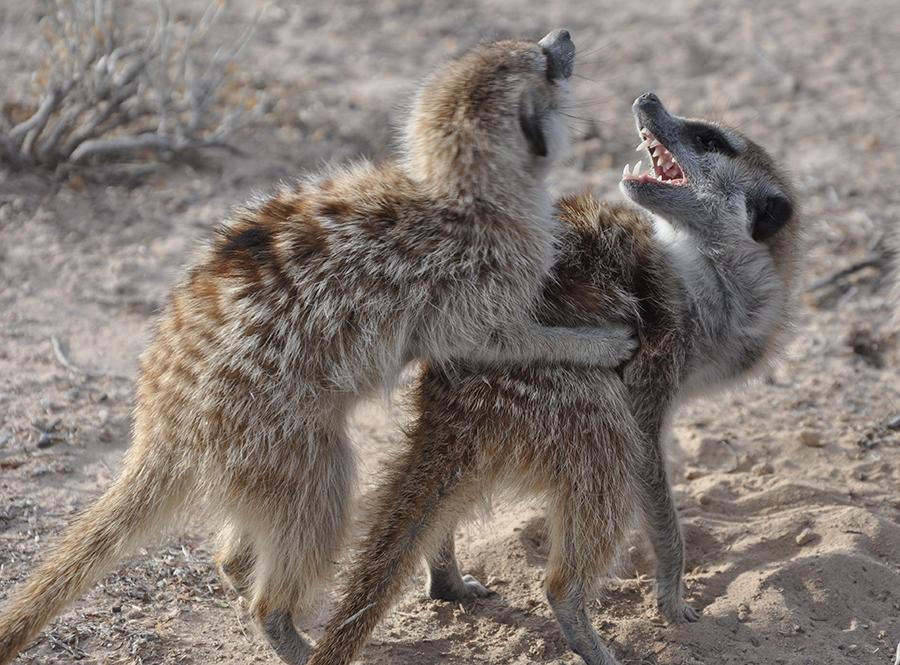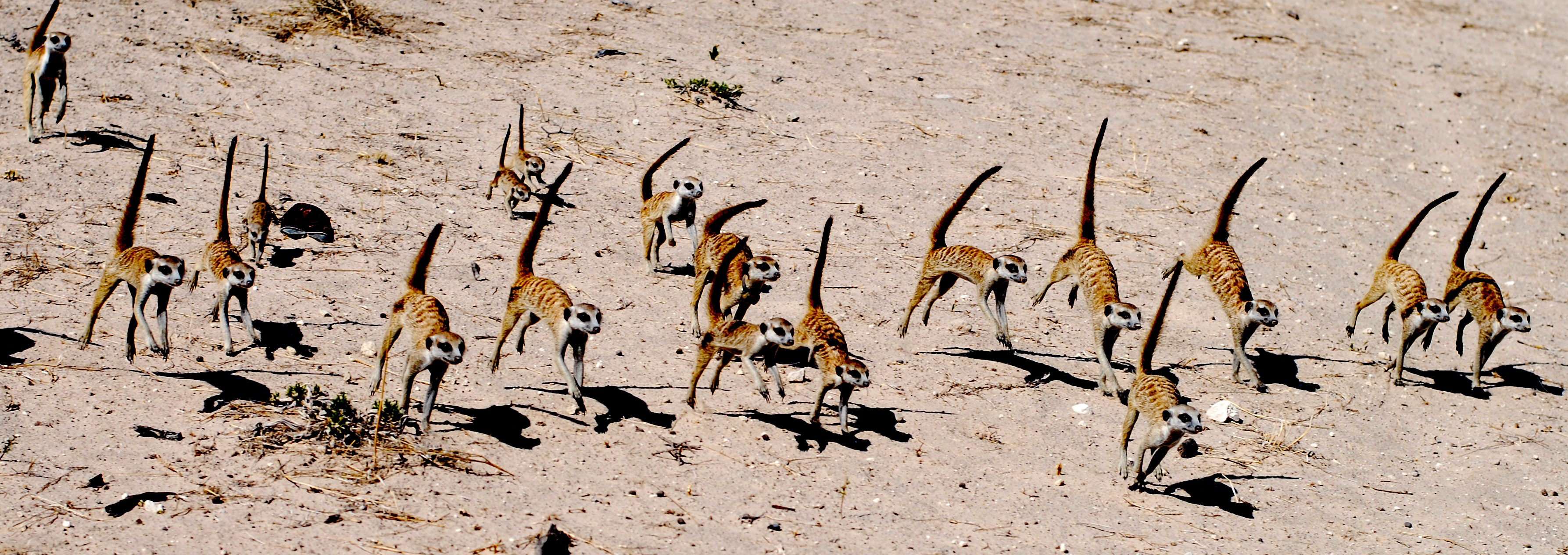‘Mean Girl’ Meerkats Can Make Twice As Much Testosterone As Males
Testosterone-laden females pay a price for being macho

Testosterone. It’s often lauded as the hormone that makes males bigger, bolder, stronger.
Now a pair of Duke University studies has identified one group of animals, the meerkats of the southern tip of Africa, in which females can produce even more testosterone than males.
Female meerkats with naturally high levels of testosterone-related hormones are more likely to be leaders, but they also pay a price for being macho, the studies show.
Squirrel-sized members of the mongoose family, meerkats live in groups ruled by a single dominant female with as many as 50 lower-ranking male and female helpers.
In meerkats, it’s the ladies who do most of the growling, biting and chasing. The top-ranking meerkat queens are the biggest bullies, shoving, charging and swiping food from the females beneath them.
The boss lady meerkat even banishes other females who manage to get pregnant or she kills their pups. This keeps the other females devoted to feeding and watching over her babies instead of their own.
For “mean girl” meerkats, this bullying behavior seems to pay off. Dominant females tend to live longer than subordinate meerkats, and they give birth to 80 percent of the surviving litters.
In a study published Oct. 18 in the journal Scientific Reports, Duke professor Christine Drea and research associate Charli Davies and colleagues found that female meerkats can produce up to twice as much testosterone as males. There are other species in which females rule, but meerkats are the only known animals in which traditional sex hormone patterns are reversed.
To see whether this chemical boost comes at a cost, in a second study Duke graduate student Kendra Smyth spent over a year from 2013 to 2014 collecting fecal samples from 37 wild females living in the Kuruman River Reserve in South Africa’s Kalahari Desert.
As part of her Ph.D. research on the effects of hormones and social status on meerkat health, Smyth measured sex hormones in the droppings she collected. She also counted parasite eggs under the microscope to determine whether the animals were infected, and how badly.
Published Oct. 18 in the journal Biology Letters, the results of the second study showed that, regardless of social status, females with higher concentrations of testosterone and related hormones tend to carry more gut parasites than other females -- a sign of a potentially weakened immune system.
Next, the team plans to investigate whether the hormones are linked to other measures of immune function, such as antibodies in the blood. “It could be that the hormones dampen the immune system, making it harder to keep parasites in check,” Smyth said.
The findings are consistent with an idea biologists first proposed in 1992, which posits that testosterone makes males showier and more aggressive, but also more prone to infection.
The new results for meerkats suggests similar testosterone trade-offs may apply to females, too, the researchers say.
This research was supported by the National Science Foundation (IOS 333–1264, IOS-1021633) and Duke. The full text of the journal article can be found in Duke Space, the university's online repository of open-access research.

One meerkat clan charges another in a war over territory in South Africa’s Kalahari Desert. Photo courtesy of Kendra Smyth, Duke University.
CITATIONS:
"Androgens Predict Parasitism in Female Meerkats: A New Perspective on a Classic Trade-Off," Kendra Smyth, Lydia Greene, Tim Clutton-Brock and Christine Drea. Biology Letters, October 18, 2016. DOI: 10.1098/rsbl.2016.0660.
“Exceptional Endocrine Profiles Characterize the Meerkat: Sex, Status, and Reproductive Patterns,” Charli Davies, Kendra Smyth, Lydia Greene, Debbie Walsh, Jessica Mitchell, Tim Clutton-Brock and Christine Drea. Scientific Reports, October 18, 2016. DOI: 10.1038/srep35492.